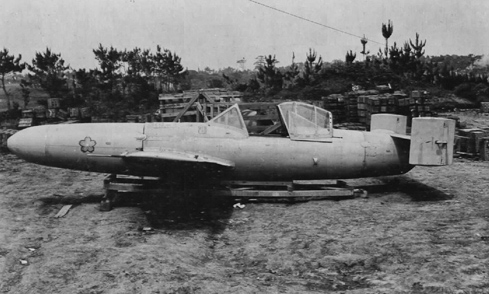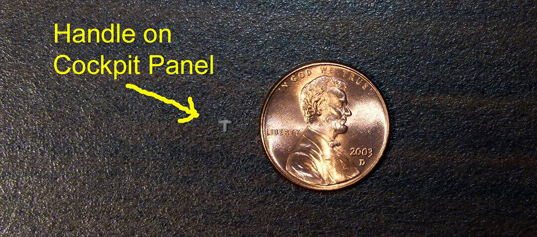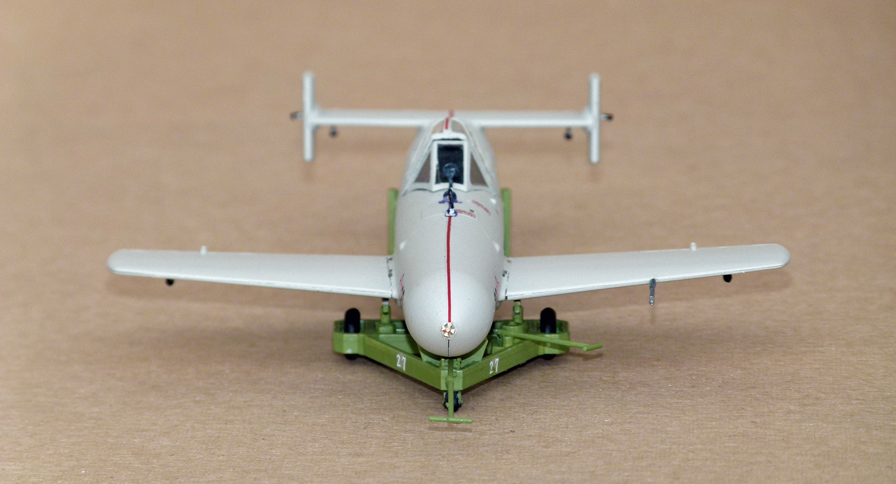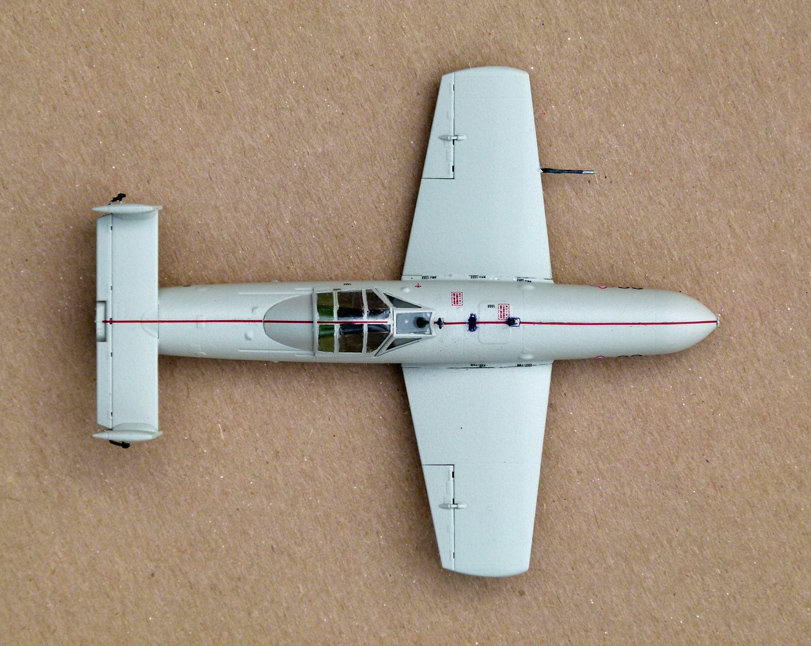

The Yokosuka MXY-7 Ohka (Cherry Blossom) was a single-seat, pilot-guided suicide fighter proposed and produced by the Empire of Japan for the Imperial Japanese Navy (IJN). Its production was an attempt to thwart the ever-increasing advances by Allied forces in the Pacific and hopefully force a favorable negotiation to end the war. By 1944, the Japanese military and government bodies were in agreement that the war could not be won outright, and certain measures need be enacted to thwart an Allied victory at the expense of the Empire. The Empire had already begun using much-publicized suicide attacks with IJN aircraft of all types - at the expense of material and experienced pilots - through their sometimes-lethal "kamikaze" strikes on Allied vessels in the Pacific Theater.
As such, other methods of kamikaze warfare were soon under review by the Japanese High Command and a design of a manned, rocket-powered "flying bomb" by IJN Ensign Mitsuo Ohta was accepted. The design was sent to the Yokosuka research facility located at the University of Tokyo for evaluation. After dissecting the simple diagram of the craft provided by Ohta, engineers at the First Naval Air Technical Bureau felt it had merit and developed formal blueprints under the designation of "MXY-7". The first 10 prototypes failed during trials while prototype "11" proved a success.
The MXY-7 was a diminutive design concept constructed of wood over an aluminum frame to help reduce weight and need for war-critical materials. It was powered by three solid-fuel Type 4 Mark 1 Model 20 rocket booster systems producing a combined 1,761 pounds of thrust. This limited flight time is what made the mother ship a necessary part of the Ohka scheme. As such, it was not wholly uncommon for the mother ship to release the suicidal aircraft too early, fearing their own aircraft's safety from aggressive and accurate Allied fighters and air defenses. This left the Ohka pilot with little in the way of aborting his mission as pilots were sealed inside with no way out. Once inside his aircraft, the pilot was also given little to think about but the mission itself. Most of the slim and featureless fuselage contained the warhead in the nose for lethal destructive capabilities. A simplistic wing structure and "T" style tail assembly offered up some basic pilot control.
The system was designed to be launched from a Mitsubishi G4M series bomber "mother ship" and the Ohka pilot would journey with the bomber crew to a pre-designated location. The Ohka pilot then took his place within the small vehicle in the bomb bay and was locked into place from the outside. Once released from the bomber, he piloted his craft towards a target under rocket power and gravity to ensure top speed. It was hoped the end result would instill a deep psychological effect on the American sailor. However, the Ohka program never materialized into a viable deterrent to Allied operations in the Pacific, not even slowing the impending conquest of the Japanese mainland. Production lasted a few short months and totaled 842 aircraft.
On March 21, 1945, the first mission involving an Ohka was launched but proved a failure when the G4M Bettys were intercepted by American fighters. The Ohkas on hand were released too far from the target and fell harmlessly into the sea.
In practice, the Ohka did not deliver the intended psychological or logistical results as planned. The system was produced up until March of 1945 and, though several Allied vessels were hit directly by Ohkas, the weapon system never caused much in the way of overwhelming danger to the fleet. Considering the amount of defensive and offensive firepower available to even single US Navy vessels, this was not totally a surprise. If anything, the mother ships used in transportation of Ohkas proved the juicier target for the Allies and Ohkas were as deadly as their other kamikaze brethren only when accurate. In all, the record of the entire Ohka program was judged as a failure with just one ship sunk (the destroyer USS Mannert L. Abele with a loss of 79 sailors), two damaged beyond repair and three others damaged by war's end.
Seven other variants were built and tested to be launched from caves or submarines or towed bombers instead of being attached to them. However, only the Type 11 went on to see serious combat action. The United States Navy gave the suicide aircraft the name "Baka" - a Japanese word for fool, obviously not sharing the Japanese sentiment of suicide as a part of warfare and honor.
Facts and General Characteristics of the MXY-7 Ohka Type 11:
Contractor: Yokosuka / Kasumigaura Naval Air Arsenal, Japan
Type: Single-seat flying bomb
Crew: 1
Wingspan: 16 ft. 9½ in. (5.12 m)
Length: 19 ft. 11 in. (6.06 m)
Height: 3 ft. 9⅓ in. (1.16 m)
Weight Empty: 970 lbs. (440 kg), Loaded: 4,718 lbs. (2,140 kg).
Powerplant: 3 × Type 4 Mark 1 Model 20 rocket motors, solid propellant, 2.60 kN (587 lbf) each.
Max speed: 576 mph (804 km/h) in a dive, 3 Rocket motors at Full-Boost: 650 mph (1,040 km/h).
Maximum Range: 23 miles (37 km)
Service Ceiling: 41,404 ft. (12,620 m)
Armament: 2,646 lb. (1,200 kg) Ammonal warhead
Facts and General Characteristics of the Model:
This model is a reproduction of an MXY-7 Ohka Type 11 assigned to 721 Air Group, 3rd Kamikaze Ohka Special Attack, Kanoya, April 12th, 1945. I bought this model online from a seller in Japan and the instructions were almost completely in Japanese. Fortunately, the paint colors were also listed in English.
Manufacturer: Fine Molds Corp., Japan
Parts: 60
Scale: 1/48
Wingspan: 4.1 in.
Length: 5.0 in.
Height (aircraft only): 1.0 in.
Hours to build and paint: 14.6
The parts and decals:

One of the smaller parts:





Rocket motors, cockpit and warhead:

Cockpit detail:
